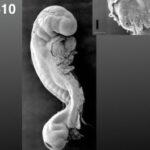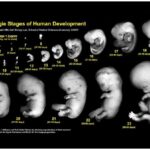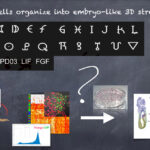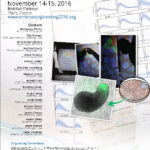This Blog represents the personal view of Alfonso Martinez Arias.
Developmental Systems Biology
| Thumb |
Title |
 |
Notes on Human Embryos
July 16, 2020 by admin
Filed as: Blog Posts, Developmental Systems Biology, History of Science
|
 |
Notes on Human Embryos
July 6, 2020 by admin
Filed as: Blog Posts, Developmental Systems Biology, History of Science
|
 |
Notes on Human Embryos
June 23, 2020 by admin
Filed as: Blog Posts, Developmental Systems Biology, History of Science
|
 |
Human Gastruloid FAQs
June 11, 2020 by admin
Filed as: Blog Posts, Developmental Systems Biology
|
 |
In defence of Embryonic Stem Cells as a new model system for Developmental Biology
January 23, 2018 by admin
Filed as: Blog Posts, Developmental Systems Biology
|
 |
Developmental Biology: the cauldron of the biological sciences
January 16, 2018 by admin
Filed as: Blog Posts, Developmental Systems Biology
|
|
On the Value of Imitating Nature (imperfectly)
March 21, 2017 by admin
Filed as: Blog Posts, Developmental Systems Biology
|
|
A Short Tale about Brachyury
February 13, 2017 by admin
Filed as: Blog Posts, Developmental Systems Biology, History of Science
|
 |
Engineering the Future of Developmental and Stem Cell Biology
November 28, 2016 by admin
Filed as: Blog Posts, Developmental Systems Biology, News
|
|
The Launch of the Human Cell Atlas Project: A Catalogue of Trillions of Cells Without a Question?
October 31, 2016 by admin
Filed as: Blog Posts, Developmental Systems Biology
|
|
Of codes and machines in Biology I; elements for a discussion
August 3, 2016 by admin
Filed as: Blog Posts, Developmental Systems Biology
|
 |
Expensive or Insightful Biology?: Single Cell Analysis as a Symptom
July 27, 2016 by admin
Filed as: Blog Posts, Developmental Systems Biology, History of Science, Scientific Publishing
|
|
Boltzmann, Darwin and THE current challenge of the life sciences
February 9, 2015 by admin
Filed as: Developmental Systems Biology, History of Science
|
|
A new sort of engineering: II. Organizing self organization in Space and Time
December 17, 2014 by admin
Filed as: Blog Posts, Developmental Systems Biology
|
|
A new sort of engineering: I. Of inner forces, programmes and duality in living systems
November 25, 2014 by admin
Filed as: Blog Posts, Developmental Systems Biology, History of Science
|
|
New publication on “symmetry breaking in ensembles of ES cellsâ€
November 6, 2014 by admin
Filed as: Blog Posts, Developmental Systems Biology, News, Videos
|
|
A lesson from William Harvey in the XVII century on the value of model organisms
September 19, 2014 by admin
Filed as: Blog Posts, Developmental Systems Biology, History of Science
|
|
A new forum for Physics and Biology in Cambridge
June 27, 2014 by admin
Filed as: Developmental Systems Biology
|
|
Grasping at straws
January 27, 2014 by admin
Filed as: Blog Posts, Developmental Systems Biology
|
|
Michael Bate and the pioneering of the developmental analysis of neural circuits
December 23, 2013 by admin
Filed as: Blog Posts, Developmental Systems Biology
|
|
The Wingless Morphogen: phlogiston in the Drosophila wing imaginal disc
July 4, 2013 by admin
Filed as: Blog Posts, Developmental Systems Biology
|
|
Searching for the inner structure of biological systems; an ongoing quest
May 17, 2013 by admin
Filed as: Blog Posts, Developmental Systems Biology
|
|
Appendix to “What do genetic screens tell us about the inner structure of biological systems in developmental and cell biologyâ€
May 13, 2013 by admin
Filed as: Blog Posts, Developmental Systems Biology
|
|
What do genetic screens tell us about the inner structure of biological systems in developmental and cell biology?
May 7, 2013 by admin
Filed as: Blog Posts, Developmental Systems Biology
|
|
Stem Cells in Developmental Biology: a debate at the BSDB
March 25, 2013 by admin
Filed as: Blog Posts, Developmental Systems Biology
|
|
On epistasis, or how genetic analysis can mislead us about biological processes.
January 30, 2013 by admin
Filed as: Blog Posts, Developmental Systems Biology
|
Scientific Publishing
| Thumb |
Title |
 |
The Finite Present of Future Plans
May 22, 2020 by admin
Filed as: Blog Posts, Scientific Publishing
|
|
Preprints in the Biomedical Sciences: The Future is Here
November 10, 2016 by admin
Filed as: Blog Posts, News, Scientific Publishing
|
 |
Expensive or Insightful Biology?: Single Cell Analysis as a Symptom
July 27, 2016 by admin
Filed as: Blog Posts, Developmental Systems Biology, History of Science, Scientific Publishing
|
|
ASAPbio: The Dusk of Peer-Reviewed Glamour (a report from a virtual attendance)
February 20, 2016 by admin
Filed as: Blog Posts, Scientific Publishing
|
|
The case of the Irish Elk, a parable for the weight of the glamour journals
December 14, 2015 by admin
Filed as: Blog Posts, History of Science, Scientific Publishing
|
|
Publish: What? Why? Where? How? – Part II: Solutions?
August 11, 2014 by admin
Filed as: Blog Posts, Scientific Publishing
|
|
Publish: What? Why? Where? How?
July 30, 2014 by admin
Filed as: Blog Posts, Scientific Publishing
|
|
The unbearable lightness of being a developmental biologist at the start of XXI century
July 14, 2014 by admin
Filed as: Blog Posts, Scientific Publishing
|
|
At the start of the World Cup: Football and the Biosciences
June 10, 2014 by admin
Filed as: History of Science, Scientific Publishing
|
|
On prepub servers and DORA, a glimpse of a future that is upon us
October 7, 2013 by admin
Filed as: Blog Posts, Scientific Publishing
|
|
The cooling impact of Cool Science in the biological sciences
September 16, 2013 by admin
Filed as: Blog Posts, Scientific Publishing
|
|
A vanity publication
June 19, 2013 by admin
Filed as: Blog Posts, Scientific Publishing
|
|
First thoughts on SF DORA
June 10, 2013 by admin
Filed as: Blog Posts, Scientific Publishing
|
|
On ambition
June 4, 2013 by admin
Filed as: Blog Posts, Scientific Publishing
|
|
Orwell’s principle of Peer Review: all authors are equal in the eyes of the editors but in High Impact Factor journals, some Authors are more equal than others.
May 29, 2013 by admin
Filed as: Blog Posts, Scientific Publishing
|
|
Can we think of something important to say?
April 26, 2013 by admin
Filed as: Blog Posts, Scientific Publishing
|
|
How to evaluate our output
April 22, 2013 by admin
Filed as: Blog Posts, Scientific Publishing
|
|
More about the current state of scientific publishing and how to start change
April 10, 2013 by admin
Filed as: Blog Posts, Scientific Publishing
|
|
What’s in an asterisk: the power of Nature
February 4, 2013 by admin
Filed as: Blog Posts, Scientific Publishing
|
|
On Scientific Publishing 2
December 6, 2012 by admin
Filed as: Blog Posts, Scientific Publishing
|
History of Science
| Thumb |
Title |
 |
Notes on Human Embryos
July 16, 2020 by admin
Filed as: Blog Posts, Developmental Systems Biology, History of Science
|
 |
Notes on Human Embryos
July 6, 2020 by admin
Filed as: Blog Posts, Developmental Systems Biology, History of Science
|
 |
Notes on Human Embryos
June 23, 2020 by admin
Filed as: Blog Posts, Developmental Systems Biology, History of Science
|
 |
Thinking About Science in Trump’s USA: A Warning from History
April 7, 2017 by admin
Filed as: Blog Posts, History of Science
|
|
A Short Tale about Brachyury
February 13, 2017 by admin
Filed as: Blog Posts, Developmental Systems Biology, History of Science
|
|
It’s the Magnesium!
August 15, 2016 by admin
Filed as: Blog Posts, History of Science
|
 |
Expensive or Insightful Biology?: Single Cell Analysis as a Symptom
July 27, 2016 by admin
Filed as: Blog Posts, Developmental Systems Biology, History of Science, Scientific Publishing
|
|
The case of the Irish Elk, a parable for the weight of the glamour journals
December 14, 2015 by admin
Filed as: Blog Posts, History of Science, Scientific Publishing
|
|
Good bye to a hut and to all that
November 20, 2015 by admin
Filed as: Blog Posts, History of Science
|
|
Boltzmann, Darwin and THE current challenge of the life sciences
February 9, 2015 by admin
Filed as: Developmental Systems Biology, History of Science
|
|
A new sort of engineering: I. Of inner forces, programmes and duality in living systems
November 25, 2014 by admin
Filed as: Blog Posts, Developmental Systems Biology, History of Science
|
|
A lesson from William Harvey in the XVII century on the value of model organisms
September 19, 2014 by admin
Filed as: Blog Posts, Developmental Systems Biology, History of Science
|
|
Summer Musing
August 15, 2014 by admin
Filed as: Blog Posts, History of Science
|
|
At the start of the World Cup: Football and the Biosciences
June 10, 2014 by admin
Filed as: History of Science, Scientific Publishing
|
|
Chemistry, the missing link in “The Double Helixâ€
April 29, 2013 by admin
Filed as: Blog Posts, History of Science
|
|
The emerging impact of modelling and theory in Cell and Developmental Biology
March 29, 2013 by admin
Filed as: Blog Posts, History of Science
|
|
The end of the biological sciences…..as we knew them
January 7, 2013 by admin
Filed as: Blog Posts, History of Science
|
|
Maps: resolution and insight in biology
December 20, 2012 by admin
Filed as: Blog Posts, History of Science
|
En Passant
 En passant (from French: in passing) is a move in chess. It is a special pawn capture, that can only occur immediately after a pawn moves two ranks forward from its starting position and an enemy pawn could have captured it had the pawn moved only one square forward (Wikipedia). It could apply to an idea, captured as it passes by.
En passant (from French: in passing) is a move in chess. It is a special pawn capture, that can only occur immediately after a pawn moves two ranks forward from its starting position and an enemy pawn could have captured it had the pawn moved only one square forward (Wikipedia). It could apply to an idea, captured as it passes by.
16-08-16
DNA becomes DNA: a letter from O. Avery
Have been reading M. Cobb’s excellent account of the search for the genetic code (Life’s Greatest Secret), more a re-telling of the history of DNA ->RNA -> protein, but a very good retelling. The book has a good discussion of the crucial figure of OT Avery (for the youngsters, the person whose work put the finger on DNA as the carrier of heritable characteristics. His account brings out excerpts of a letter from Avery to his brother (also a biologist) which I first learnt about in a light but wonderful account of the history of Genetics by Simon Mawer (Gregor Mendel: Planting the Seeds of Genetics). Here is the end of the letter which has some absolute gems of what science should be and is, and of the humble account of a momentous occasion in the history of Biology by one of its heroes. Some people consider Avery’s work more significant than that of Watson and Crick. It is not difficult to agree. It was the piece of information that inspired Watson and, when you think: it is some result! But will leave you with the words of Avery. After some years of work (some through WWII) focusing in purifying what we now call DNA from strains of Pneumoccocus and testing its transforming power, he felt he had gone as far as he could to make sure the DNA was the transforming principle.
“Sounds like a virus, may be a gene. But with mechanisms I am not now concerned. One step at a time and the first is, what is the chemical nature of the transforming principle? Someone else can work out the rest. Of course, the problem bristles with implications. It touches the biochemistry of the thymus type of nucleic acids which are known to constitute the major part of the chromosomes but have been thought to be alike regardless of origin and species. It touches genetics, enzyme chemistry, cell metabolism and carbohydrate synthesis, etc. today it takes a lot of well documented evidence to convince anyone that the sodium salt of deoxyribose nucleic acid, protein-free, could possibly be endowed with such biologically active and specific properties and this evidence we are now trying to get. It’s lots of fun to blow bubbles-but it’s wiser to prick them yourself before someone else tries to.
So there’s the story Roy-right or wrong it’s been good fun and lots of work. This supplemented by war work and general supervision of other important problems in the Lab has kept me busy, as you can well understand. Talk it over with Goodpasture but don’t shout it around-until we’re quite sure or at least as sure as present method permits. It’s hazardous to go off half cocked-and embarrassing to have to retract later. I’m so tired and sleepy I’m afraid I have not made this very clear. But I want you to know-and sure you will see that I cannot well leave this problem until we’ve got convincing evidence. Then I look forward and hope we may all be together-God and the war permitting-and living out our days in peace.”
10-08-16
One of my obsessions is the question of what is the function of Wnt/?-catenin signalling which is linked to an issue that arises every year when I have to teach “what is a transcription factor” to undergraduates. Does the fact that IF one hits a cell with Wnt or an agonist of ?-catenin and gets a transcriptional response mean that ?-catenin activates transcription? The answer should lie in what we would call the microscopic realm that deals with molecular details. However, observations of what actually happens to a cell when in the same experiment does suggest that ?-catenin has a different function from what one would call a “standard” transcription factor (see 1 for a first discussion). Thinking about this issue a recent paper from S. Hoppler’s group at University of Aberdeen 2 raises many questions from the microscopic point of view. Three related papers 3-5 suggest a defined function for the case of bona fide Wnt regulated genes in early fate decisions: to anchor the activity of transcription factors, in these cases Smad2,3 proteins. The process of eukaryotic transcription requires the cooperation of different functions (histone modification, nucleosome clearance, DNA looping, positioning and activation of polymerase, stabilization of large protein complexes, etc). Is it possible that ?-catenin plays a more structural role and, at that, helps the stability of molecular complexes? As its activity is regulated by extracellular signalling, perhaps this is the mechanism for coordinating the activity of “card carrying” transcription factors across populations 1,6.
1. Martinez Arias, A. & Hayward, P. Filtering transcriptional noise during development: concepts and mechanisms. Nat Rev Genet 7, 34-44 (2006).
2. Nakamura, Y., de Paiva Alves, E., Veenstra, G.J. & Hoppler, S. Tissue- and stage-specific Wnt target gene expression is controlled subsequent to beta-catenin recruitment to cis-regulatory modules. Development 143, 1914-25 (2016).
3. Estaras, C., Benner, C. & Jones, K.A. SMADs and YAP compete to control elongation of beta-catenin:LEF-1-recruited RNAPII during hESC differentiation. Mol Cell 58, 780-93 (2015).
4. Dahle, O., Kumar, A. & Kuehn, M.R. Nodal signaling recruits the histone demethylase Jmjd3 to counteract polycomb-mediated repression at target genes. Sci Signal 3, ra48 (2010).
5. Funa, N.S. et al. beta-Catenin Regulates Primitive Streak Induction through Collaborative Interactions with SMAD2/SMAD3 and OCT4. Cell Stem Cell (2015).
6. Munoz-Descalzo, S., de Navascues, J. & Martinez Arias, A. Wnt-Notch signalling: an integrated mechanism regulating transitions between cell states. Bioessays 34, 110-8 (2012).
06-08-16
I am surprised and encouraged by the discussion generated by the post on codes and machines. There were some interesting points raised and they led me to some readings. Most of them were in the philosophical realm, which explains why I had missed them; we have enough keeping up with the fact finding exercise we are engaged in today- but some were very good. I like particularly this one from the physical chemist Michael Polanyi, who gets very close to some of the issues I raised and also has some interesting things to say about machines. I found interesting, but not surprising, the references to Turing and von Neumann machines but the important point is that to see if something is a machine and what kind of a machine it is, one needs to build it. And it is here where any conception of a biological system as a machine will find its proof. Notice, also, that I never said a cell is a machine. What I did say, and maintain, is that DNA has instructions for machines and those machines – which I was explicit about – do make up a cell which is an interesting device (this is the word I used).
02-08-16
Always interesting to see what grafts in Twitter. It is never what one imagines but, in retrospect, it reflects the mood of the community (the community that follows you or the topics you are interested in). This weekend D. Duboule tweeted a most interesting piece by the late biochemist G. Schatz. It clearly struck a chord, and not only in me. Read it. It’s worth every minute you invest on it. The impressive thing about the piece is that it reminds us of what Science is about, of what we have lost in this transformation from a curiosity driven enterprise to … it is difficult to define but, for want of better words, industrial? Corporate? Certainly publication-driven enterprise. A transformation that Schatz calls “From small to big science” in which we have lost not only the discovery hungry naivite; that is the soul of scientific curiosity but also the sense of a community chasing the answer to interesting and important questions.
Having been reading to try to understand the 2007/08 crash I realize that Cell/Nature/Science (NCS) are like the rating agencies of the financial world leading up to the debacle and that what they do is to give AAA status to a lot of subprime papers by bundling them with a few significant ones. In the biomedical sciences what this messes up is the careers of young scientists (sort of like the mortgages of the people who bought a house or two thinking they were getting a safe and valuable deal) and what it promotes is the careers of some individuals who know how to play the game (for it is now clear that it is a game). Peer review is all biased towards those who know how to use their AAA rating to sell their subprime papers (usually large data sets dressed up as science) to foster their own interests. Make no mistake, there are some AAA papers here, it is the others and their abundance I am worried about. Unfortunately it is not clear how this bubble will end but a prickly pin might be coming in the shape of preprints.
 En passant (from French: in passing) is a move in chess. It is a special pawn capture, that can only occur immediately after a pawn moves two ranks forward from its starting position and an enemy pawn could have captured it had the pawn moved only one square forward (Wikipedia). It could apply to an idea, captured as it passes by.
En passant (from French: in passing) is a move in chess. It is a special pawn capture, that can only occur immediately after a pawn moves two ranks forward from its starting position and an enemy pawn could have captured it had the pawn moved only one square forward (Wikipedia). It could apply to an idea, captured as it passes by.











Dear Martinez-Arias Lab,
I was a regular reader of the blog posts on this website, but there haven’t been any new ones for some time. Do you plan to resume posting here? Or are you posting somewhere else? Please let me know, because I would like to continue reading your insights.
Thank you.
Respectfuly,
Milena
Great job!!!